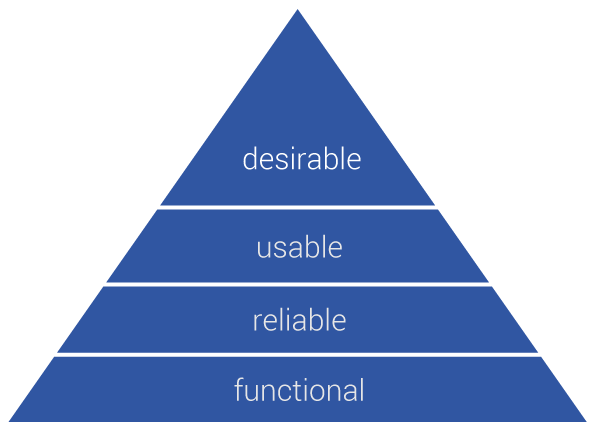This week, I’ve been discussing with friends and colleagues what ‘customer engagement’ could or should mean. There’s a cadence to the change in vernacular of design. ‘Customer engagement’, we think, is ripe for a meaningful redefinition. My colleague puts it like this
In many ways Customer Engagement has become old hat. Omnichannel has become trite … and many of the other ideas, like real time offers, lack practical insights into how they would become reality. HCI is already familiar (if not adopted) by almost everyone with a working brain.
Now my thoughts on how emotional design and behavioural economics may enrich the discourse on ‘customer engagement’
Emotional design
There’s been a natural progression from Don Norman’s seminal book of the same name. There’s some basic psychology that folks like Aaron Walter have explored, best summed up in this diagram. Getting ‘pleasurable’ right, I believe, is a big part of differentiation in a saturated and competitive market. It’s about customer engagement, but not in the ways that you’ve listed above, which I agree have become overused.

That works for the west, but what does customer engagement look like in the Global South? Nag and I recently posited that in the GS, it’s the base of the pyramid that is usually most important – see Thinking differently (frugal innovation in the Global South).
Behavioural economics
I think we miss a few tricks when we look just at individual interactions and the usual qualitative research methods that ostensibly reveal to us the how and why of human behaviour. I mean, it does, but only for the ‘consciously aware’ decisions or behaviours. Economists have known for a while that so much of human behaviour is unconsciously irrational. Dan Ariely, Daniel Kahneman etc. How might we change the way we approach idea validation and general product development to reveal products and services that people do actually use, regardless of the individual product’s design* merit (*where ‘design’ refers to the physical quality of the product – slickness, feel, aesthetic – not necessarily how well it solves a given problem).
Again, this ties in with the ‘frugal innovation’ discourse and the redefinition of what ‘design’ means – moving more toward ‘a solution to a problem within set constraints’. We’ve come a long way – via movements like service design, but I think the market is generally still pretty reductive when talking about design – it’s often still regarded as a veneer, an aesthetic layer, and the remit of ‘creative’ types. We’d do well to get our heads out of our arses and look at some of the models and systems that economists uses to make decisions that affect entire nations. Surely, there is a lot to learn from how they do things, and surely, ‘big data’ plays a part here too!